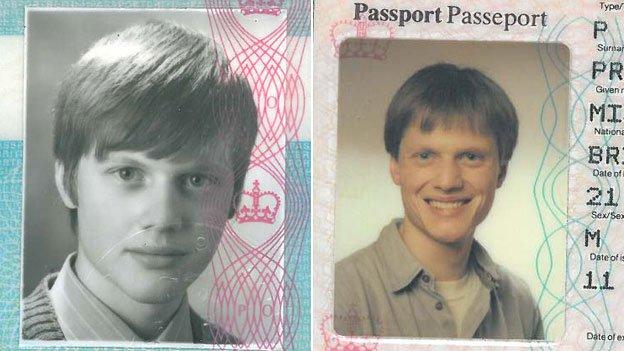Should the dark blue British passport be brought back?
- Published
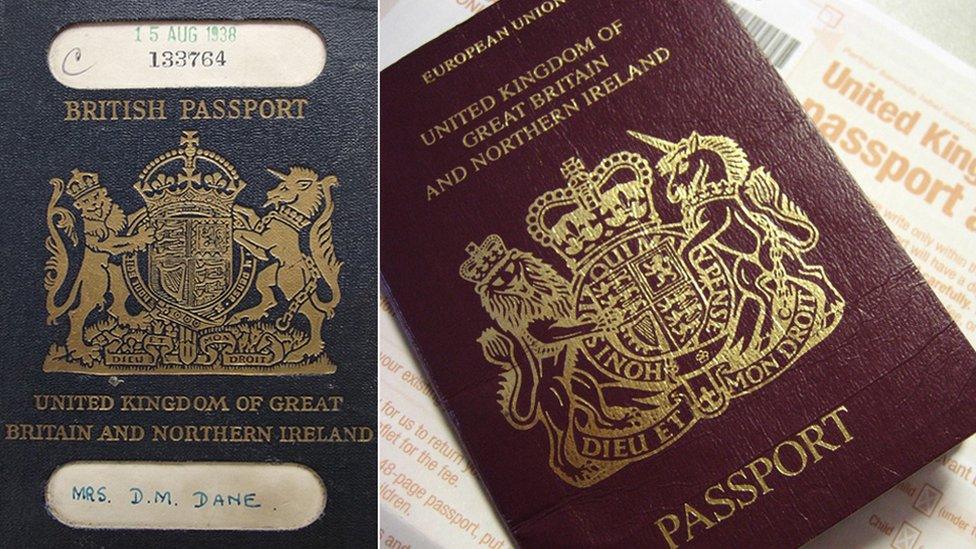
For almost 30 years Britons have travelled the world clutching small burgundy books.
But the question of what colour the British passport - for some a symbol of national identity - should be is not an easy one to answer.
And following the UK's vote to leave the European Union, its hue has again been called into question.
Why dark blue?
For many, the true colour of the British passport will always be dark blue.
The familiar, modern-looking, navy British passport - used for more than 70 years by millions of Britons travelling abroad - dates back to 1921, the Home Office says., external
But, according to writer and lecturer Martin Lloyd, the colour goes back even further than that.
The first blue passports were in fact first produced on 1 February 1915, says Mr Lloyd, as the government frantically attempted to find ways of identifying foreign spies during World War One.

Mr Lloyd - who has written a book about the history of passports - says it was after a secret agent, infiltrated within the UK government, was discovered with a US passport that photographs were included on all British passports.
At the same time a dark blue cardboard cover was introduced.
So why blue?
"Blue is a very serviceable colour and it's a very cheap dye to make," Mr Lloyd says.
"And one practical consideration is it doesn't show the dirt. You are travelling around throwing it around and putting it in and out of your pocket and it is likely to get dirty."
But for others it's more a question of patriotism.
The Sun newspaper has launched a campaign to restore the traditional dark blue, external "as a symbol of the UK regaining sovereignty from the EU".
It quotes Tory MP Andrew Rosindell as saying: "It's a matter of identity. Having the pink European passports has been a humiliation."

History of the passport
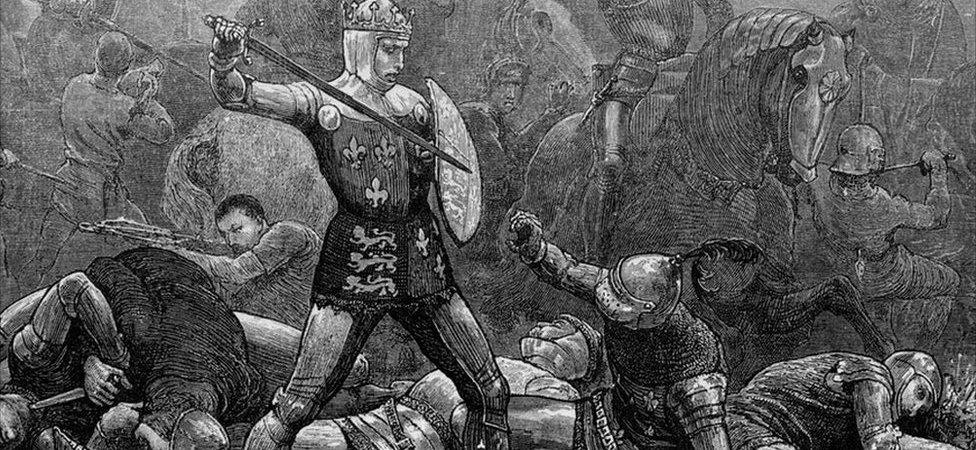
1414: The first version of the passport - 'Safe Conducts' was introduced during the reign of King Henry V (seen here at the Battle of Agincourt in 1415).
First introduced during the reign of Henry V in the form of a "safe conduct", passports were granted from at least 1540
One of the earliest still in existence was issued on 18 June 1641 and signed by Charles I
A passport photograph became a requirement in 1914, upon the outbreak of World War One
The familiar blue British passport came into use in 1921, with the last expiring in 2003
The first burgundy, machine-readable, UK passports were issued in Glasgow, in September 1988

For more than 70 years the blue passports became a travelling companion for Britons - even apparently coming to their aid when some found themselves in unenviable situations.
British double agent Robert Bruce Lockhart recounted being caught in the middle of fighting during Finland's civil war with his friend "Hicks" who he said waved his British passport in the hope of being spared in the shooting.
When the decision was taken to change Britain's passports to burgundy, Mr Lloyd says some Britons were so fond of the little blue book they even travelled to consular offices in Europe - where newer production machines had yet to be introduced - to renew their passports and receive a blue one in return.
Does the colour matter?
For some countries, the choice of passport colour relates to its predominant religion.
Muslim countries such as Morocco, Pakistan, and Saudi Arabia all have green passports - a colour associated with the Prophet Muhammad.
Hrant Boghossian, the vice-president of Arton Group - which runs the interactive passport database Passport Index, external - told the Telegraph red passports could hint at a communist past.
Russia, China, Serbia, Latvia, Romania, Poland and Georgia all boast red passports.
The decision to harmonise the passports of the members of the European Community was taken in the 1980s.

What's in a colour?
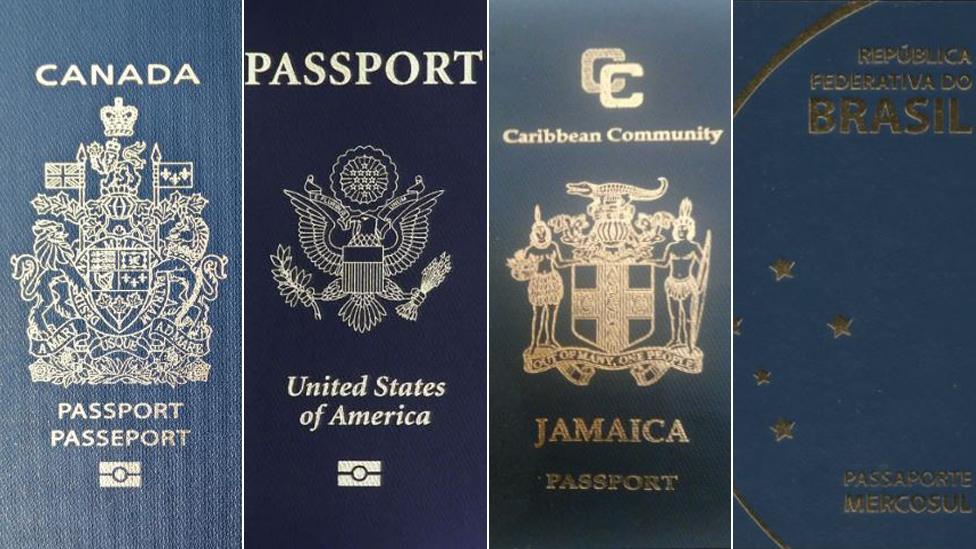
According to the Passport Index, 76 countries have blue passports, including a number of former colonial and Commonwealth countries, such as Australia, the United States, Canada, India and Hong Kong.
Several Caribbean countries also have blue passports, including Jamaica, Antigua and Barbuda, Barbados and St Vincent and the Grenadines.
In Europe, people from Iceland and Bosnia and Herzegovina both carry blue passports, while it is also a popular colour in central and south America, where Argentina, Brazil, Costa Rica, El Salvador, Uruguay and Venezuela are among those with blue passports.
Others include Israel, Iraq, Syria and North Korea.
Source: Passport Index, external

According to the Economist, external, it took the nine members of the-then European Community "years" to settle on the colour of the passport. Mr Lloyd says the idea of a lilac passport was even discussed at one point.
It was in 1988 that new burgundy British passports were first printed, with "European Community" emblazoned on the front - later to be replaced with "European Union".
Turkey, Macedonia, and Albania have all changed their passport shades to burgundy in order to match their EU aspirations.
It is such connotations that have prompted leading pro-Brexit politicians to call for the burgundy passport - so synonymous with the UK's place inside the EU - to be abandoned and the blue ones returned.
UKIP leader Nigel Farage brandished his passport several times during the EU referendum campaign, suggesting he could burn his in the event of a Brexit vote.
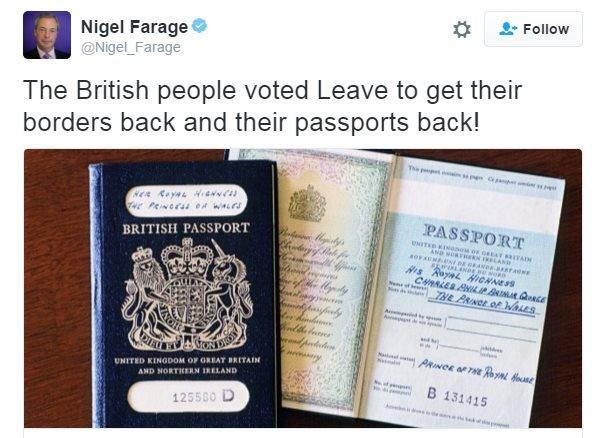
The subject has also been raised in Parliament, when pro-Brexit Conservative MP Michael Fabricant asked if the Home Office would bring back the blue documents.
But Home Office minister Robert Goodwill said nostalgic Britons may be in for a wait.
There are "no immediate plans for changes to the format or colour of the UK passport", he said, adding: "Parliament will be informed of any changes to the passport following UK withdrawal from the European Union."
Mr Lloyd says there will "always be people who don't like the red passports" but he says, in any case, the perceived status of the British passport has declined over the decades as travel has become "far more mundane".
However, he points out there is one blue British travel document still being produced - those issued to non-Britons who are recognised as refugees.
- Published24 June 2016
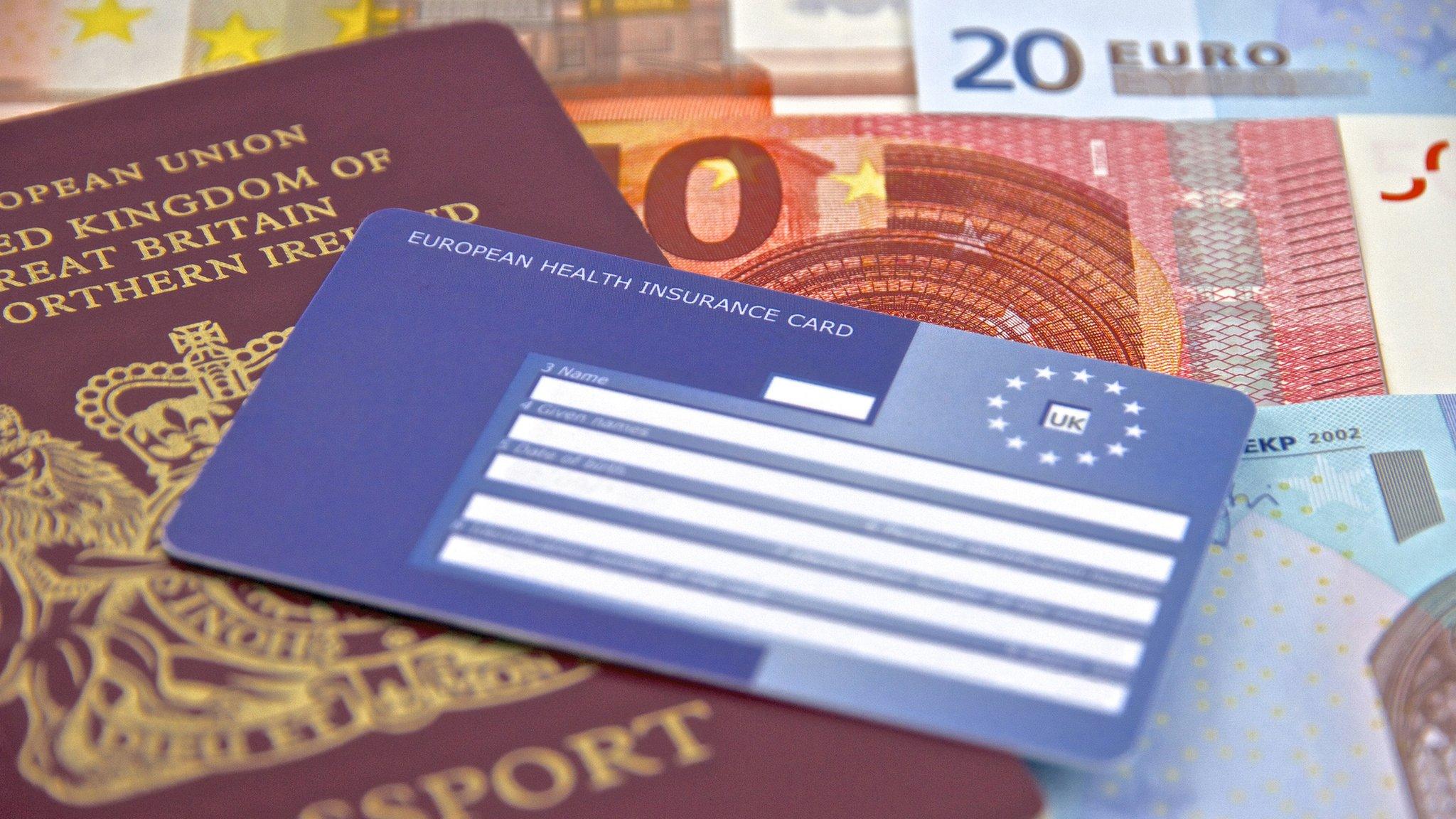
- Published5 February 2015
